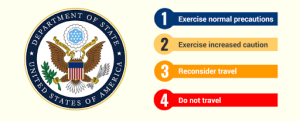WASHINGTON, DC – Today, Congressman David Schweikert announced a number of critical provisions that he introduced or co-sponsored were included in the final end-of-year package being voted on by Congress.
“I am very pleased to see many pieces of legislation I introduced or co-sponsored included in the final package being voted on by the House of Representatives today. This package should have been approved months ago, as many of our small businesses are closing permanently and too many hard-working Americans are still out of work. I urge my colleagues to focus on targeted solutions in our appropriations measures to help support government operations and the American people.”
Multiple pieces of legislation authored and co-sponsored by Congressman Schweikert were incorporated into the legislative package including:
- H.R. 6821, bipartisan legislation to ensure businesses are allowed to deduct their expenses if they utilized a PPP. In August, Congressman Schweikert wrote a letter to Congressional leadership specifically requesting this fix be included in the end-of-year relief package.
- Reducing Medical Expense Deduction Income Threshold, legislation to provide financial relief to American families facing the burden of high health care costs by permanently reducing the income threshold for the medical expense deduction to 7.5%.
- Supporting Foster Youth and Families through the Pandemic Act, provides temporary additional funding to support older foster youth, kin caregivers, at-risk families, state courts, adoptive families, and foster care prevention services, and allows older youth to remain in foster care during the pandemic.
- H.R. 5405 Southwest Tourism Expansion Act, Expansion of Arizona and New Mexico Border Zone Travel. Under current policy, eligible Mexican nationals can travel in certain areas of Arizona and New Mexico for up to 30 days. With CBP increasing security due to the recurrent vetting of travelers, this policy focuses on efficiencies and has shown both a decrease in costs to CBP and an increase in revenue to local economies in those states as a result of additional opportunities for freedom of movement.
- H.R. 3607, the Fossil Energy Research and Development Act, which reauthorizes and expands Department of Energy (DOE) research, development, and demonstration programs for fossil energy programs including carbon capture and storage technologies, methane leak detection and mitigation, and further research into carbon dioxide removal technologies;
- H.R 1166, the Utilizing Significant Emissions with Innovative Technologies (USE IT) Act, supports carbon utilization and direct air capture research, and turn captured carbon dioxide into a beneficial resource and economic opportunity while reducing emissions. The bill would also support federal, state, and non-governmental collaboration in the construction and development of carbon capture, utilization, and sequestration (CCUS) facilities and carbon dioxide (CO2) pipelines.
- Carbon Removal Program, to examine the methods, technologies, and strategies to remove carbon dioxide from the atmosphere at a large scale. Additionally, it establishes a Carbon Dioxide Removal Task Force to advise the Secretary of Energy on matters pertaining to carbon dioxide removal, identify barriers to the advancement of carbon dioxide removal projects, and tools for advancing and deploying such projects;
- H.R. 5905, Joint Long-Term Storage Act, which directs the Department of Energy (DOE) to run pilot projects of long-duration energy storage technologies. Additionally, it requires the DOE and Department of Defense (DOD) to work together on joint long-term energy demonstration projects, which will increase cooperation while using taxpayer dollars more efficiently and accelerate commercial deployment of long-duration energy storage technologies to increase energy resilience and security; and
- Study on Blue Hydrogen technology, to look at the benefits of blue hydrogen technology and how that can further enhance the deployment and adoption of carbon capture and storage.
To read the full text of the end-of-year package, click HERE.
###
Back to News
